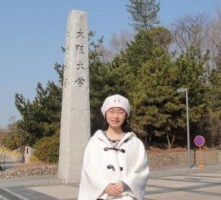The VSARPJ Blog
| 21/06/11 By Kerri |
 I was at NINJAL from 1 March – 30 May, which was, as it turned out, a very interesting time to be in Japan. I am very impressed – and rather jealous – of all the resources available at NINJAL, in particular the technologies developed to parse corpora and store linguistic data. Much of my time there was spent looking into ways to align the Oxford Corpus of Old Japanese with the diachronic corpus being developed at NINJAL. I presented my research related to this and the construction of a diachronic dictionary for research purposes at the NINJAL Salon. (The talk is available here.) I received invaluable feedback which I hope I can incorporate into new versions of the Lexicon used as part of the VSARPJ project. I'm back in Oxford now and looking forward to my next trip to Japan and especially to seeing everyone at the VSARPJ workshop in July. I was at NINJAL from 1 March – 30 May, which was, as it turned out, a very interesting time to be in Japan. I am very impressed – and rather jealous – of all the resources available at NINJAL, in particular the technologies developed to parse corpora and store linguistic data. Much of my time there was spent looking into ways to align the Oxford Corpus of Old Japanese with the diachronic corpus being developed at NINJAL. I presented my research related to this and the construction of a diachronic dictionary for research purposes at the NINJAL Salon. (The talk is available here.) I received invaluable feedback which I hope I can incorporate into new versions of the Lexicon used as part of the VSARPJ project. I'm back in Oxford now and looking forward to my next trip to Japan and especially to seeing everyone at the VSARPJ workshop in July. |
||||||||||||
|
|||||||||||||
| 23/02/11 By Stephen |
Zixi came back to Oxford from Japan last weekend. I hadn't seen her since her visit to NINJAL in January. I spent three months there and arrived back in Oxford early this month. While I was there I saw some other familiar faces, people who have visited the Research Centre for Japanese Language and Linguistics in Oxford in the last two years: Zendo Uwano, Sakoda Kumiko, Toshinobu Ogiso, Yasuhiro Kondo, Kageyama Taro (the director of NINJAL), and one of the external members of the VSARPJ project who is at NINJAL as a visiting researcher, John Whitman. I spent most of my time at NINJAL working closely with the team that is preparing the daichronic corpus project at NINJAL, learning about their methods of corpus construction, coordinating the sharing of data from our respective corpora, and examining the problem of how to mark up semantic roles, grammatical functions, and null arguments for the VSARPJ project in particular. Directly connected with the work on my research proposal, I joined the Yasuhiro Kondo's Diachronic Corpus project and Toshinobu Ogiso's Statistics and Machine Learning in Historical Japanese Studies project. I have also been given to the chance to participate in a Nihon Gengo Gakkai symposium organized around Taro Kageyama's Japanese Lexicon project next June. While in Japan I also participated in many of the various colloquia and research report meetings held regularly at NINJAL, attended conferences and meetings in Tokyo, Tukuba, and Osaka, and made presentations at NINJAL and at Hiroshima University. Back in Oxford, the Research Centre has now received the first batch of files for Early Middle Japanese, machine-parsed for morphological information and hand-corrected at NINJAL, and we are preparing for the syntactic markup stage. The collaboration between Oxford and Tachikawa is already bearing fruit. NINJAL is an ideal place to to work, and everyone there is very enthusiastic about sharing their ideas and helping one another. I would have liked more time to take advantage of all the resourcess there, so I look forward to going back soon. My three months there was a wonderful experience, and I'm sure Kerri will find NINJAL every bit as wonderful when she arrives there next week. | ||||||||||||
|
|||||||||||||
| 07/02/11 By Zixi |
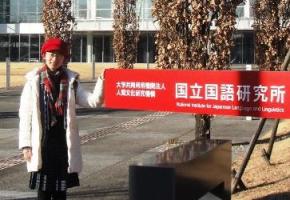 Right after JK20, I came to Osaka University to undertake my research "Split intransitivity in Old Japanese", with generous financial support from Toshiba International Foundation and Oxford Sasakawa Foundation. My research has been going very smoothly here. There are many good resources in the university and local libraries, museums, and the lectures and seminars, especially those of Prof Kinsui's, are also very interesting and helpful. In Osaka University as well as Kyoto University, I had many opportunities to participate in various linguistics events including meetings, workshops, symposiums, etc. In January, I went to report to Toshiba International Foundation in Tokyo, visited Tokyo University, and spent one week in NINJAL, where I attended interesting talks/symposiums, met with many professors and scholars, and received valuable feedback on my research. Right after JK20, I came to Osaka University to undertake my research "Split intransitivity in Old Japanese", with generous financial support from Toshiba International Foundation and Oxford Sasakawa Foundation. My research has been going very smoothly here. There are many good resources in the university and local libraries, museums, and the lectures and seminars, especially those of Prof Kinsui's, are also very interesting and helpful. In Osaka University as well as Kyoto University, I had many opportunities to participate in various linguistics events including meetings, workshops, symposiums, etc. In January, I went to report to Toshiba International Foundation in Tokyo, visited Tokyo University, and spent one week in NINJAL, where I attended interesting talks/symposiums, met with many professors and scholars, and received valuable feedback on my research.
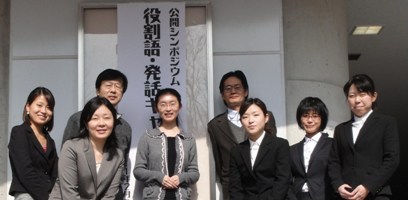
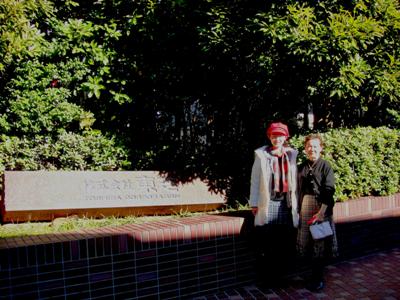
(click on the pictures to enlarge) |
||||||||||||
|
|||||||||||||
| 03/02/11 By Kerri |
I suppose since today is both Chinese New Year and Setsubun, it's the appropriate day to create a new blog entry. Much has happened since the last entry, which isn't surprising as it has been a while. I'll try to be better about updating more often in the future.
Stephen has just returned from three months researching at the Kokken, Zixi is still in Japan and will return to Oxford in a few weeks (and hopefully will add a blog entry of her own letting us know what she has been up to), and I am preparing for my upcoming research trip to the Kokken. One of the main things we've accomplished here in the past few months has been the production and publication of the Oxford Corpus of Old Japanese, which presents a fully romanized version of the OJ poetic corpus. It is possible to search this version of the corpus by hitting ctrl-F/cmd-F and searching for words or word-like items (i.e., a string of letters). We are not making the morphological and syntactic markup available at this time. Having the corpus in this form has been very helpful for us and has made it easier to spot mistakes. One of my tasks lately has been to search for items that have been marked up inconsistently and make sure that when items appear in the same (or nearly identical) environments that they are marked up in the same way. If you see mistakes, please let us know by e-mailing the VSARPJ account. Another task has been to assign the unique identification numbers (UIN) to more words (especially verbs). Many words have been assigned their UINs automatically when occurring in completely predictable environments. For example, the verb yuk- 'to go' is predictable in all its forms except as a noun (yuki) where it is homophonous with yuki 'snow'. All predictable forms of yuk- were assigned the UIN for the verb automatically, and the UINs for the form yuki will be assigned later, after someone has gone through the corpus and decided whether the word yuki is the noun 'snow' or the noun related to the verb yuk-. (For those of you who like to memorize alphanumerics, the UIN for yuk- 'to go' is L031840 and yuki 'snow' is L050075.) Linda Lanz has donated time to help us assign more UINs by going through the homophonous verb forms and identifying the correct meaning so that the ID can be correctly assigned to the verb. Hopefully all verbs will have been assigned their unique identification numbers in the next 2-3 months. I'll end this blog entry with a note that the RCJLL now has a facebook page. Please 'like' it if you haven't already done so: |
||||||||||||
|
|||||||||||||
| 08/10/10 By Kerri |
I know it's been ages since I've updated this. I've intended to write entries to give updates on our progress several times, but every time I sit down to write an entry, I learn that everything is about to change again. As a reminder (and a hint), anyone is welcome to write a blog entry, just send it to me in an e-mail and I'll post it.
It was great to see everyone and also to meet new colleagues at our second workshop. It was a very productive and enjoyable week. Here is a selection of pictures from the workshop (click for a larger image): |
||||||||||||
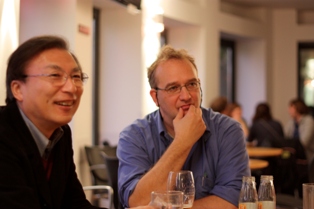 |
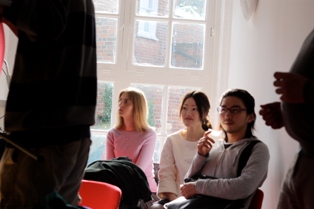 |
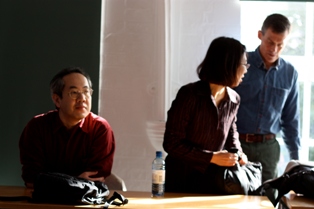 |
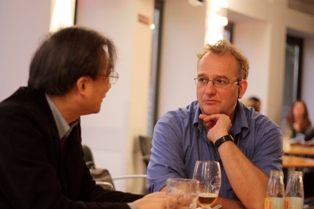
|
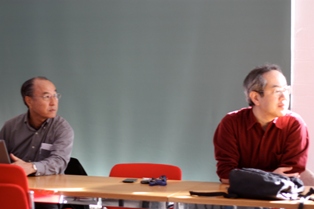 |
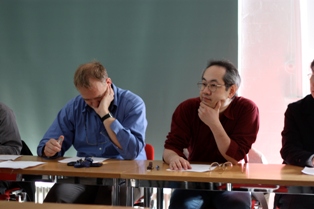 |
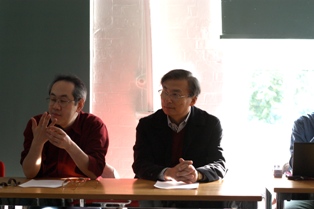 |
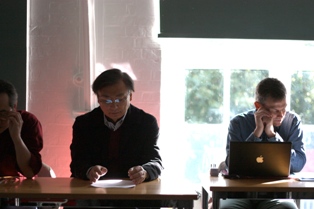 |
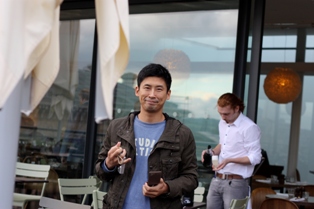 |
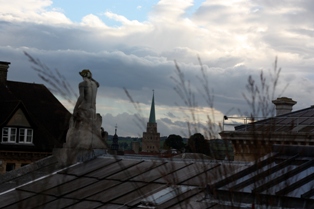 |
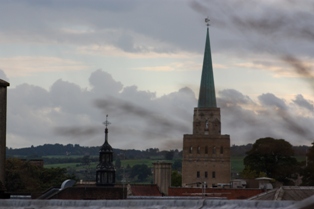 |
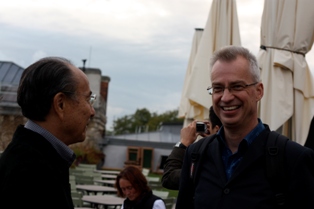 |
By Kerri
From 19-21 January we had our first project workshop, which was held here in Oxford. It was great to finally have the opportunity to meet the project’s external members and some other colleagues who will be contributing to the project in the near future. I look forward to our next meeting in October when we can continue our serious and not-so-serious conversations.
The feedback we received about the corpus in its current form was invaluable, and I am relieved that the external members seemed pleased with our progress thus far. Bjarke, Stephen, and I will be talking over the next few days how to best incorporate the suggestions we received and making difficult choices about which suggestions are essential for the success of the project (i.e., those that are necessary for the analysis of argument structure) and those that, while they are extremely important for furthering our understanding of pre-modern Japanese, sadly must be added to our ever-growing wishlist until we have the time and resources to implement them. I’m sure everyone who has done corpora work understands how difficult it is to have to choose to not mark up some interesting aspect of the language that is outside of the scope of their project.
Here are some pictures I took during the workshop - don’t be surprised if these and/or some others appear on the Centre website from time to time.

By Kerri
 Stephen, Yuhki, Zixi, and I just got back from a very productive weekend in York, both to attend the "Corpus-based Advances in Historical Linguistics" workshop and to have a "meet and greet" with Susan Pintzuk and Ann Taylor of the University of York. (This is also mentioned on our news & events page.) The workshop was an excellent opportunity for us to meet other people working on corpora, learn about their approaches to encoding texts, and see various methods for searching texts and extracting data. The meeting with Susan and Ann was extremely helpful for us. Since they have both been involved with ground-breaking work in corpus linguistics, they were able to give us tips on things to do and things to avoid when marking up our corpus. Stephen, Zixi, and I also spent Sunday morning playing tourist in York, since none of us had been there before.
Stephen, Yuhki, Zixi, and I just got back from a very productive weekend in York, both to attend the "Corpus-based Advances in Historical Linguistics" workshop and to have a "meet and greet" with Susan Pintzuk and Ann Taylor of the University of York. (This is also mentioned on our news & events page.) The workshop was an excellent opportunity for us to meet other people working on corpora, learn about their approaches to encoding texts, and see various methods for searching texts and extracting data. The meeting with Susan and Ann was extremely helpful for us. Since they have both been involved with ground-breaking work in corpus linguistics, they were able to give us tips on things to do and things to avoid when marking up our corpus. Stephen, Zixi, and I also spent Sunday morning playing tourist in York, since none of us had been there before.
By VSARPJ
- We have completed our phonemic romanization and first round of morphological markup for all OJ texts, and three EMJ texts (Kokin wakashū preface, Tosa nikki, and Taketori monogatari);
- Stephen and Kerri have taken a course in XML markup, and have designed schemas for encoding texts as well as various stylesheets to display information in different ways;
- We have had three students working on the project, including two DPhil students, Yuhki and Zixi, who came to Oxford in October, and Dan who received a summer Research Studentship (read more about Dan's contribution here.)
Our guidelines for tagging and encoding texts can be found on the Oxford corpus page. There are also news and events pages for both the VSARPJ project and Centre.
Please feel free to e-mail us if you have any comments or questions.
By VSARPJ


